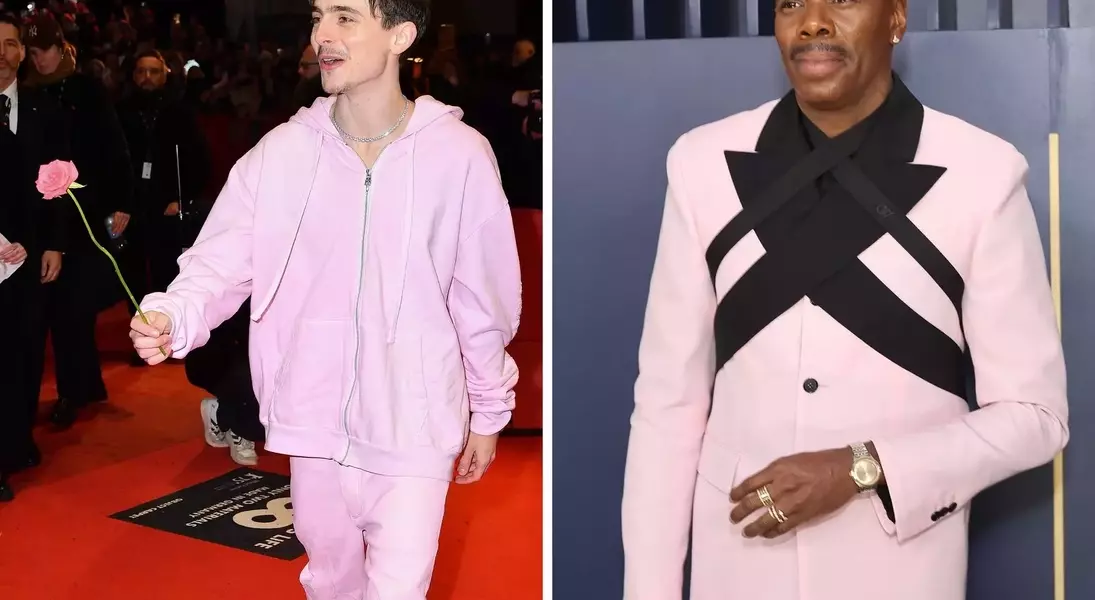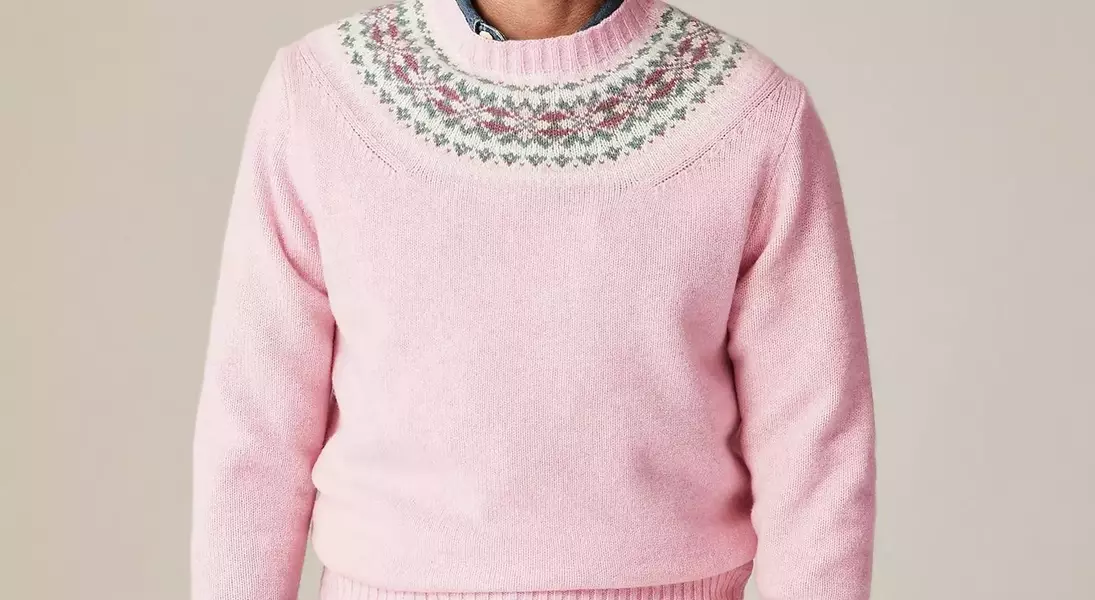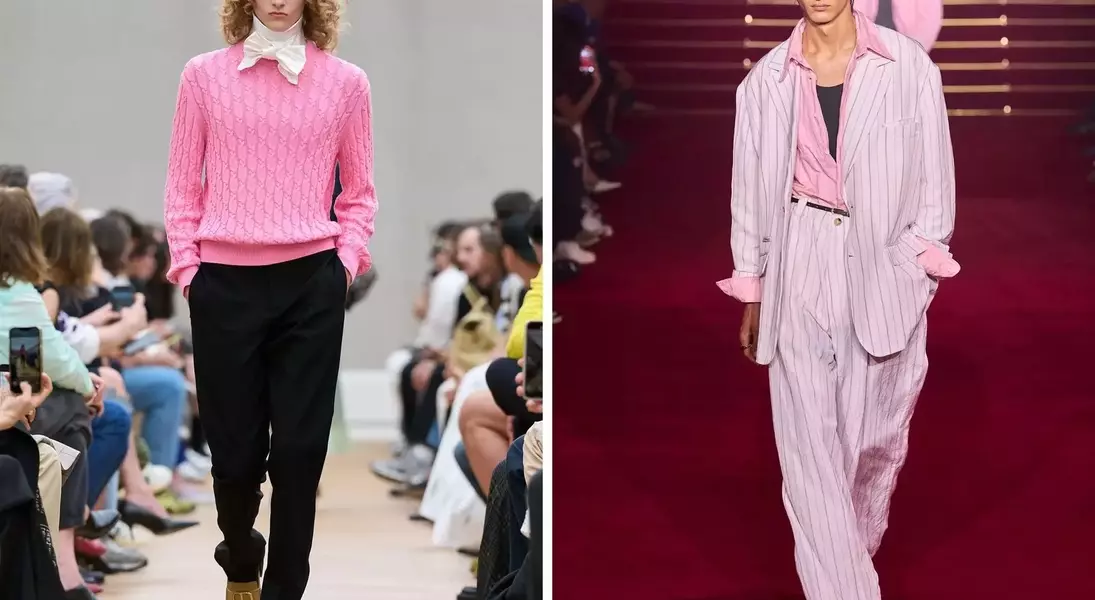




Embrace the Hue: Redefining Masculinity Through Pink Fashion
A Sweater Sparks a Social Media Firestorm: The Pink Debate
A seemingly innocuous preppy sweater from J.Crew, rendered in a soft pink, recently ignited significant online discourse. Conservative commentator Juanita Broaddrick's questioning post on social media platform X, regarding men wearing the garment, provoked strong reactions. Many followers echoed sentiments that aligned with traditional views on masculinity, jokingly associating the pink attire with certain political leanings.
The Cultural Policing of Masculine Attire in Modern Society
This incident reflects a broader societal tension concerning male dress codes, particularly within conservative circles in the United States. Veronika Koller, a discourse studies professor, highlights that this resistance is rooted in an exaggerated form of hegemonic masculinity that seeks to marginalize femininity and other expressions of male identity. Such boundaries, she notes, are actively enforced and policed.
High Fashion's Embrace: Pink Dominates the Runways
Despite public controversy, leading designers in menswear are unequivocally championing pink. Esteemed brands such as Dior, Paul Smith, and Willy Chavarria prominently featured various shades of pink—from delicate dusty rose to vibrant fuchsia—in their latest collections, appearing on sweaters and shirts alike. Krista Corrigan, a senior retail analyst, observes that runway trends strongly indicate pink's ascent as a prominent color.
Designers Challenge Traditional Gender Norms in Fashion
Brooklyn-based design duo Tanner Richie and Fletcher Kasell, founders of Tanner Fletcher, expressed bewilderment at the negative online reactions, attributing them to antiquated notions of toxic masculinity. Richie points out the irony of societal norms that permit women to wear blue without question, while some men exhibit fragility when it comes to adopting colors traditionally associated with femininity. Their brand even showcased a cropped, blush pink sweater with eyelet details at its SS26 show.
Market Hesitation Versus Runway Boldness: The Pink Paradox
While high fashion embraces pink, the broader market shows more restraint. Corrigan notes that mass-market brands have not committed to pink with the same enthusiasm they showed for colors like burgundy or butter yellow. Data indicates a slight decrease in new apparel investment in pink, yet sell-outs for pink items have increased, suggesting latent consumer demand. Menswear retailer Mr Porter also reports a rising interest in pink, particularly for versatile layering pieces like shirts and knitwear.
The Enduring Legacy of Pink in Men's Style Through History
The color pink is not a new phenomenon in men's fashion, having graced the wardrobes of 18th-century aristocrats and even featured in the iconic styles of Miami Vice. Irene Kim, an editorial associate at Vogue Runway, highlights archived fashion records from the early 2000s, showcasing numerous instances of prominent men wearing vibrant pink.
Overcoming Residual Stereotypes: Pink's Journey to Acceptance
Despite its historical presence, some lingering associations with femininity persist, as noted by Laurie Pressman of the Pantone Color Institute. This influences brand strategies, as exemplified by a past incident where a retailer rebranded a pink sweater as 'men's pink' to enhance its appeal to male consumers. However, such gendered marketing is becoming less common, and designers increasingly appreciate pink simply for its aesthetic quality.
Pink as a Statement: Confidence and Rebellion in Modern Menswear
Wearing pink can also symbolize a form of defiance against conventional gender expectations, conveying self-assured masculinity. Frida Tordhag, a fashion analyst, suggests that younger male consumers adopt pink as a 'confidence flex,' using it to signal individuality and an open-minded approach to gender roles. This trend is particularly evident in streetwear culture and on platforms like TikTok.
Celebrity Influence and Pink's Red Carpet Prominence
The red carpet has become a prominent platform for pink, with celebrities like Colman Domingo, Jason Momoa, and Timothée Chalamet sporting pink suits and knitwear. Designer Doni Nahmias emphasizes that a well-chosen pink can strike a balance between playfulness and sophistication, appearing both clean and tough, and flattering various skin tones.
The Future Outlook: Pink's Continued Ascent in Menswear
While pink's overall popularity in fashion saw a decline after the Barbie movie's peak, its potential in menswear remains strong. Analyst Madé Lapuerta observed a correlation between increased searches for footballer Lionel Messi, known for his hot pink Inter Miami jersey, and a rise in pink's popularity. Brands like Adidas have capitalized on this, with pink sneakers quickly selling out. Despite some market caution, industry data and designer insights suggest a commercially proven future for pink in men's fashion, building on its success in womenswear color trends.
Designer Confidence in Pink's Commercial Appeal
Menswear brands consistently report strong sales for pink items. Our Legacy's co-founder, Cristopher Nying, notes that their pink cardigans and jeans sell 'spot on,' while Tanner Fletcher's Richie affirms that their male customers readily purchase pink pieces, unfazed by perceived femininity. This collective experience underscores a growing confidence among designers in pink's commercial viability and its acceptance among consumers.
